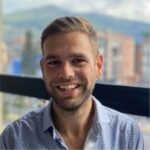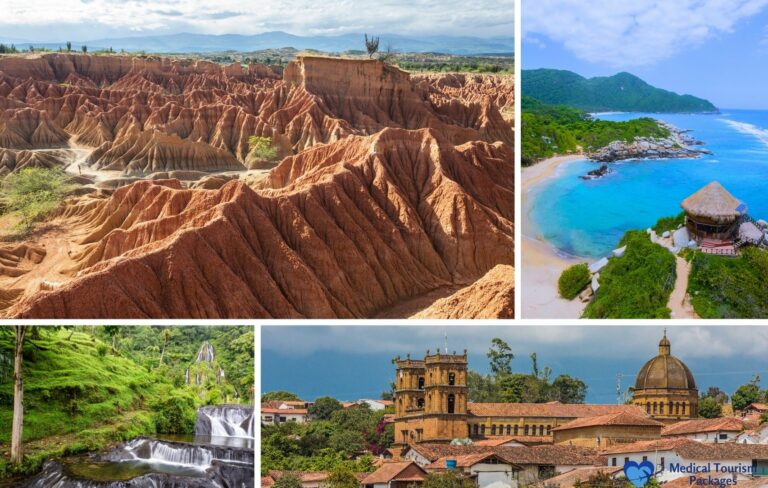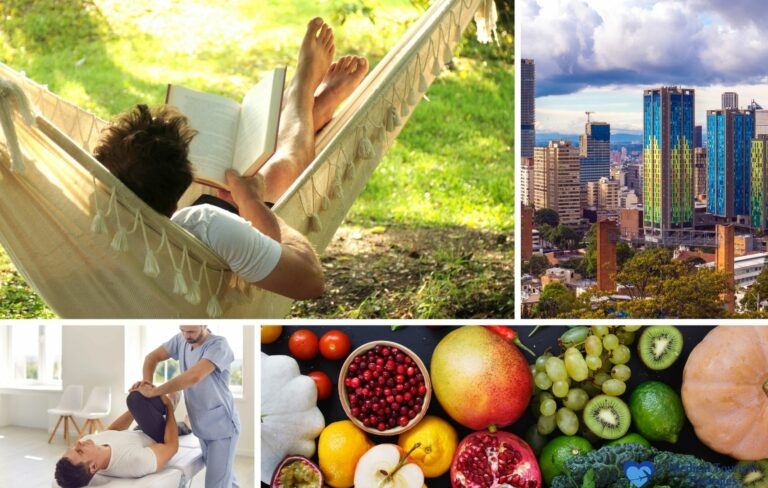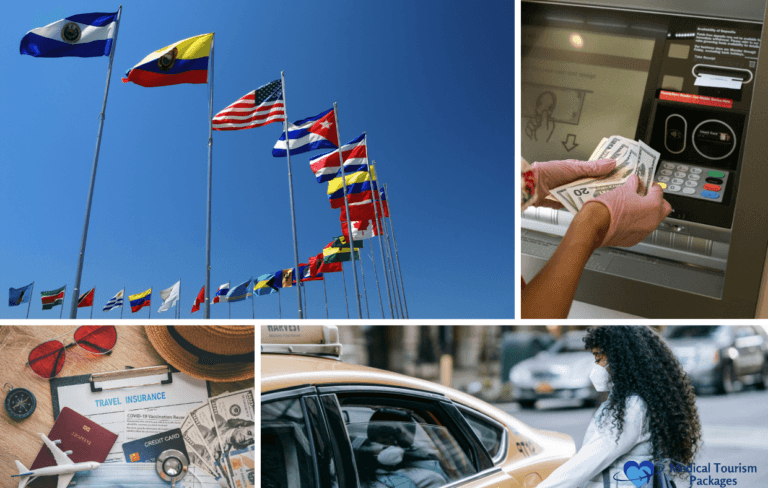Book Appointment Now
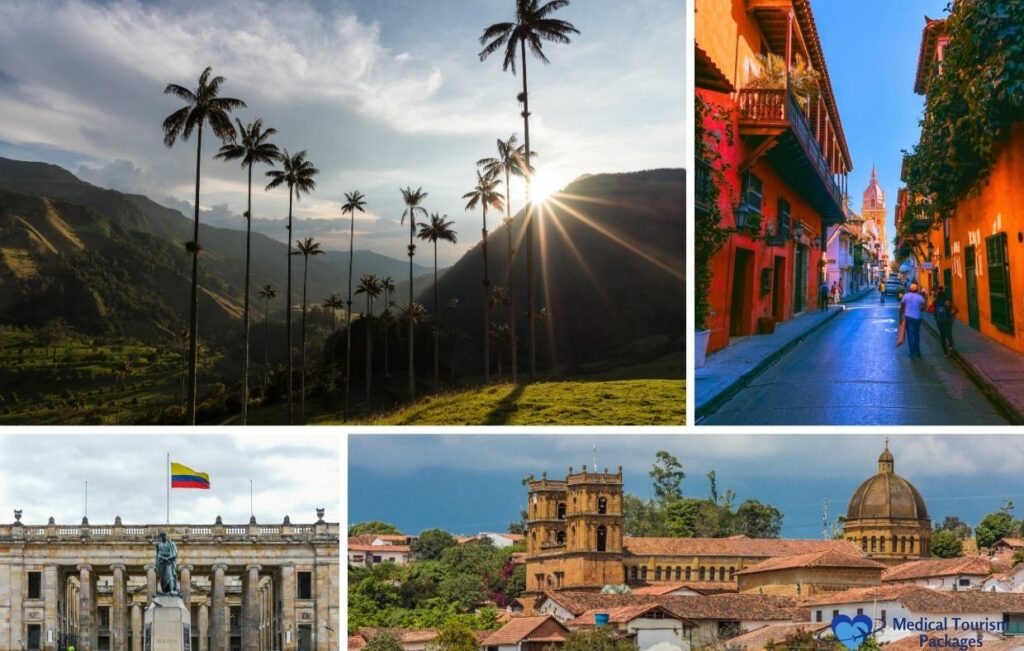
Experience Colombian Culture: Low-Impact Activities for Medical Visitors
Colombia offers world-class healthcare at competitive prices. While you focus on recovery, you can also enjoy the country’s rich culture. This guide provides carefully selected activities for medical visitors with different mobility levels and recovery needs.
Essential Information for Medical Visitors
Colombia welcomes thousands of medical tourists each year. Your recovery journey will be more enjoyable when you understand the local environment, climate, and practical considerations.
Understanding Your Activity Options During Recovery
Different procedures require specific recovery periods and have unique activity limits. Use this guide to plan cultural activities based on your recovery stage:
| Procedure | Recovery Timeline | Activity Limits | Recommended Cultural Activities |
|---|---|---|---|
| Cosmetic Surgery | 6 weeks healing; 3-6 months for final results | No hard activities (48-72h); limited lifting; no swimming (2+ weeks) | Museum visits, coffee tastings, seated music shows |
| Dental Procedures | 2-6 weeks healing | Avoid hard activities (1 week); some eating limits | Food markets (soft foods), music shows, craft shopping |
| Cardiovascular | 6-12 weeks recovery | No lifting >10 pounds (8 weeks); limited arm movement | Guided historic tours with breaks, botanical gardens |
| Orthopedic | 6-12 weeks initial recovery | Limited joint movement; no high-impact activities | Ground-floor museum exhibits, seated performances |
| LASIK Surgery | 24 hours for improvement | Avoid eye strain; no swimming (2 weeks) | Gentle music events, audio tours, short museum visits |
The right activities match your recovery stage and physical abilities. Always check with your doctor before trying any activity.
Best Times to Visit Colombia
Colombia’s weather varies by region. Plan your visit during these ideal times:
| Region | Best Times to Visit | Weather Notes |
|---|---|---|
| Bogotá | December-March, July-August | Dry seasons; temperatures 14-19°C |
| Medellín | December-March, June-August | “City of Eternal Spring” with steady 22-28°C year-round |
| Cartagena | December-April | Warm coast; less rain (31°C average) |
| Coffee Triangle | December-March, July-August | Best coffee harvest viewing October-February |
These seasons offer the most comfort for medical recovery with less rain and mild temperatures.
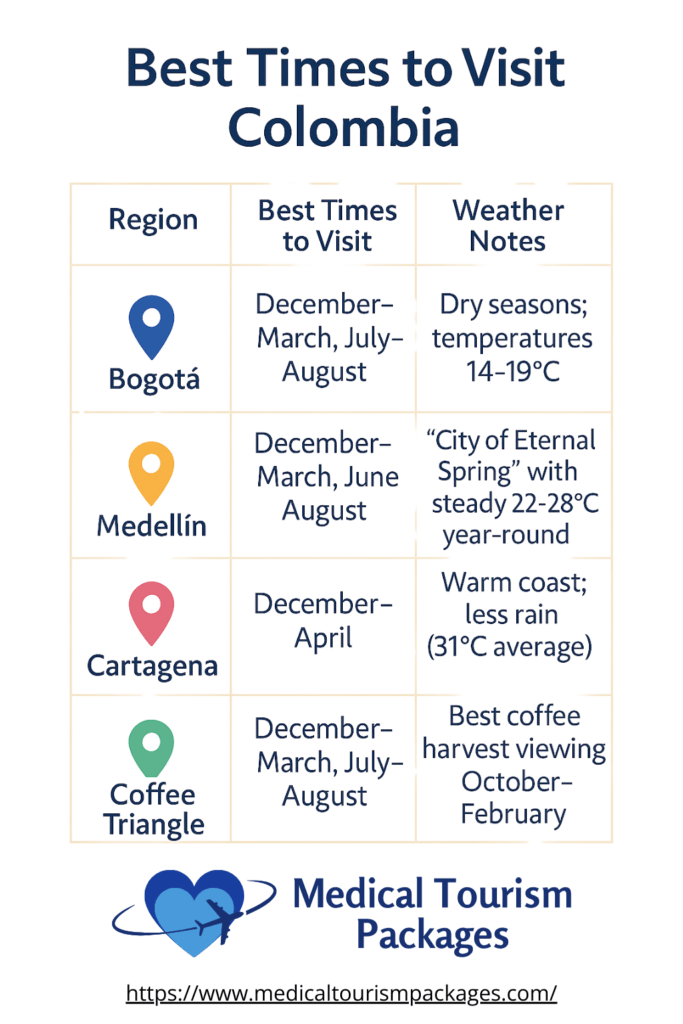
Key Spanish Phrases for Medical Tourists
Learning basic Spanish helps you communicate your needs during recovery:
| Need | Spanish Phrase | English Translation |
|---|---|---|
| Medical Needs | “Me duele aquí” | It hurts here |
| “Necesito descansar” | I need to rest | |
| “¿Puedo caminar?” | Can I walk? | |
| “¿Qué actividades debo evitar?” | What activities should I avoid? | |
| Getting Around | “¿Hay ascensor?” | Is there an elevator? |
| “Necesito ayuda” | I need help | |
| “¿Es accesible para sillas de ruedas?” | Is it wheelchair accessible? |
Keep these phrases handy during your stay. Many Colombians in tourist areas speak some English, but using basic Spanish shows respect and improves your experience.
Transportation Services for Limited Mobility
Getting around during recovery requires planning. These services help medical tourists with mobility needs:
- Bogotá: Green Travel DMC (wheelchair accessible buses with lifts)
- Medellín: Medellin Tours (vans with hydraulic lifts)
- Cartagena: QRST Wheelchair Transportation (airport transfers available)
- Colombia-wide: Wheel the World (planned accessible journeys)
Book these services 24-48 hours in advance, especially during high tourist season.
Colombian Culture and Recovery-Appropriate Activities
Colombian culture blends indigenous, Spanish colonial, and African influences. This mix shows in the music, literature, art, food, and festivals across different regions.
Colombians value family bonds, which shape daily life and social structures. The country’s music includes cumbia from the Caribbean coast, accordion-based vallenato, and salsa (especially popular in Cali). Gabriel García Márquez, Colombia’s Nobel Prize winner, created the Magical Realism literary style here. Each region offers unique traditions, foods, and art forms. Visitors often note the warm welcome they receive from locals.
Low-Impact Cultural Activities by Recovery Phase
Your ability to enjoy cultural activities changes as you heal. These options are grouped by recovery stage to help you plan safely.
Early Recovery Phase (1-2 weeks post-procedure)
The first two weeks after a procedure require gentle activities with minimal movement. You can still enjoy Colombian culture with these low-impact options.
Listen to Live Traditional Music
Music offers a perfect low-impact cultural experience during early recovery.
Health Considerations:
- Physical Effort: Very Low
- Good For: All recovery types, especially early stages
- Recovery Benefits: Music reduces anxiety and pain
- Duration: 1-2 hours (seated)
Venue Options:
| Venue | Location | Accessibility | Experience Details |
|---|---|---|---|
| La Cueva | Barranquilla | Wheelchair access, reserved seats available | Historic venue visited by García Márquez; traditional cumbia (evening shows with advance booking) |
| El Patio de Carlos Vives | Santa Marta | Fully accessible, front-row seats for mobility needs | Founded by vallenato star Carlos Vives; blends traditional and modern styles; afternoon shows good for early recovery |
Cumbia began on Colombia’s Caribbean coast during colonial times, mixing African rhythms with indigenous and Spanish sounds. Vallenato started as musical storytelling among cattle herders in the Magdalena region before becoming Colombia’s national music.
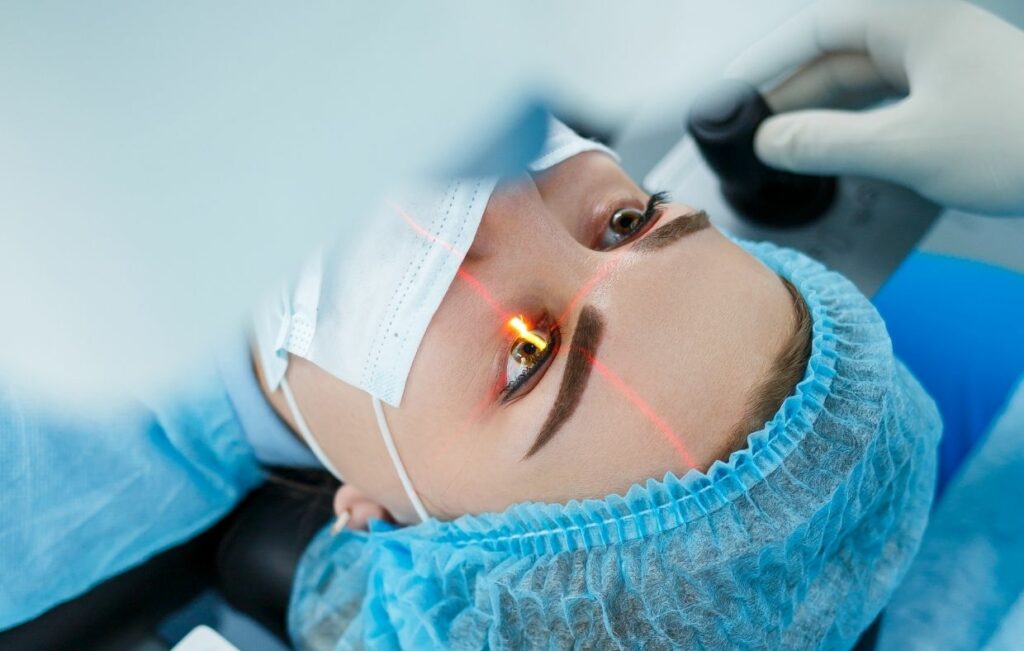
Enjoy Culinary Experiences with Dietary Accommodations
Food experiences can be adapted for medical tourists with dietary needs.
Health Considerations:
- Physical Effort: Very Low
- Good For: Most recovery types with diet adjustments
- Recovery Benefits: Nutrition support for healing, sensory enjoyment
- Duration: 1-3 hours (seated with minimal walking)
Experience Options:
| Experience | Location | Accessibility | Dietary Adjustments |
|---|---|---|---|
| El Cielo Restaurant | Bogotá, Medellín | Elevator access, spacious seating | “Sensory tasting menu” with texture options for dental patients; handles most dietary needs |
| Paloquemao Market Fruit Tasting | Bogotá | Ground-level access, guided tours | Seated tastings of soft tropical fruits good for dental recovery; rich in healing vitamins |
Colombia grows over 30 native fruit species found nowhere else on earth. Markets like Paloquemao have operated since the 1940s and showcase the country’s agricultural variety.
Mid-Recovery Phase (2-4 weeks post-procedure)
As you heal, you can handle slightly more movement while still prioritizing rest. These activities work well during the middle stage of recovery.
Visit Museums with Limited Walking Routes
Museums offer rich cultural experiences with controlled movement.
Health Considerations:
- Physical Effort: Low
- Good For: Cardiovascular, orthopedic, cosmetic recovery (2+ weeks)
- Recovery Benefits: Mental stimulation helps recovery; planned routes help manage energy
- Duration: 1-2 hours with multiple sitting options
Museum Options:
| Museum | Location | Accessibility Features | Simplified Routes |
|---|---|---|---|
| Gold Museum (Museo del Oro) | Bogotá | Elevator access, wheelchairs available, rest areas | “Recovery Route” covers key exhibits on one floor (45 min); shows pre-Hispanic gold artifacts over 2000 years old |
| Botero Museum | Bogotá | Wheelchair access, benches in most rooms | Ground floor route with Fernando Botero’s distinctive rounded paintings and sculptures (30-45 min) |
| Modern Art Museum (MAMM) | Medellín | Full accessibility, frequent seating | “Art Therapy Route” with calming works selected for healing (40 min) |
The Gold Museum houses over 34,000 gold pieces, forming the largest collection of pre-Hispanic gold artifacts in the world. Fernando Botero’s distinctive style with rounded figures has made him Colombia’s most recognized artist globally.

Discover Colombian Handicraft Markets
Shopping for crafts provides light activity with frequent rest options.
Health Considerations:
- Physical Effort: Low
- Good For: Most recovery types (2+ weeks post-procedure)
- Recovery Benefits: Light walking helps circulation; shopping provides mental benefits
- Duration: 30-90 minutes with breaks
Market Options:
| Market | Location | Accessibility Features | Recovery-Friendly Features |
|---|---|---|---|
| Usaquén Flea Market | Bogotá | Mostly flat ground, weekend-only schedule | Central craft section with seating; demonstration areas where you can watch crafting without much walking |
| Las Bóvedas | Cartagena | Ground-level shops, smooth surfaces | Historic arches with 23 craft shops in one accessible location; air conditioning helps comfortable recovery |
Colombian crafts show distinct regional traditions. Wayuu mochila bags from La Guajira use techniques passed down for generations, with patterns that tell specific cultural stories. Each bag takes 15-30 days to complete by hand.
Later Recovery Phase (4+ weeks post-procedure)
As your recovery advances, you can enjoy more active cultural experiences. These options work well after the first month of healing.
Take Modified Historic Walking Tours
Walking tours can be adjusted to match your recovery progress.
Health Considerations:
- Physical Effort: Moderate
- Good For: Later-stage recovery (4+ weeks)
- Recovery Benefits: Gradual activity supports rehabilitation; mental engagement
- Duration: 1-2 hours with frequent breaks
Tour Options:
| Tour | Location | Accessibility Features | Modified Experience |
|---|---|---|---|
| Cartagena Historic District | Cartagena | Smooth cobblestones, shaded rest areas | “Gentle Walled City Tour” covers 50% of usual walking distance with multiple stops; focuses on main plazas and historic sites within 500 meters |
| Salt Cathedral of Zipaquirá | Near Bogotá | Elevator access to main levels, smooth paths | “Accessible Sacred Journey” focuses on main chambers only; specific tour times with less crowds and extra rest periods |
Cartagena’s walled city dates to the 16th century and stands as one of the best-preserved Spanish colonial settlements in the Americas. The Salt Cathedral of Zipaquirá sits within an active salt mine and shows the religious importance of salt in pre-Columbian cultures.
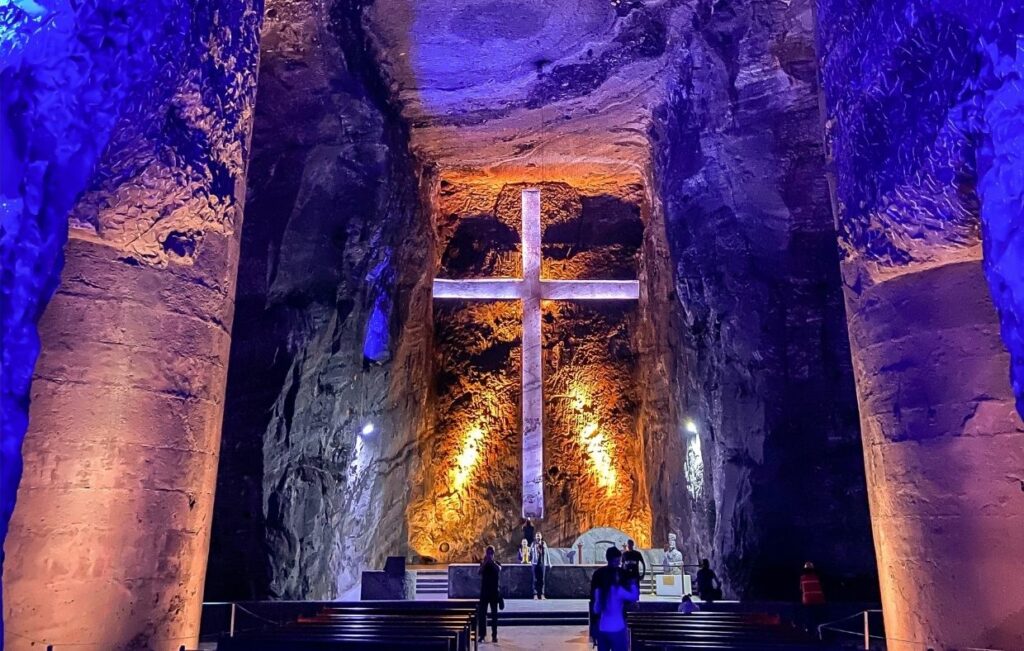
Experience Coffee Culture with Limited Mobility
Colombia’s coffee region offers adapted experiences for medical visitors.
Health Considerations:
- Physical Effort: Moderate
- Good For: Cardiovascular patients (6+ weeks), cosmetic surgery (4+ weeks)
- Recovery Benefits: Moderate walking helps rehabilitation; sensory stimulation
- Duration: 2-3 hours with multiple breaks
Experience Options:
| Experience | Location | Accessibility Features | Recovery-Friendly Elements |
|---|---|---|---|
| Hacienda San Alberto | Buenavista, Quindío | Wheelchair-accessible paths, rest areas | “Recovery Coffee Journey” includes seated tastings and short plantation tour with vehicle rides between viewing points |
| Finca El Ocaso Salento | Salento, Quindío | Modified trails, guided help | “Gentle Harvest Experience” allows participation from seated positions; focuses on sensory aspects of coffee production |
Colombia’s Coffee Triangle (Eje Cafetero) became a UNESCO World Heritage site in 2011. Colombian coffee production began commercially in the early 1800s and now supports over 500,000 farming families across 22 departments.
Enjoy Gentle Nature Walks in Botanical Settings
Natural settings promote healing while providing cultural insights.
Health Considerations:
- Physical Effort: Moderate
- Good For: Most recovery types (4+ weeks)
- Recovery Benefits: Natural settings improve healing and mental wellbeing
- Duration: 1-2 hours with multiple rest areas
Location Options:
| Location | City | Accessibility Features | Recovery-Friendly Elements |
|---|---|---|---|
| José Celestino Mutis Botanical Garden | Bogotá | Paved paths, wheelchairs available, frequent benches | “Healing Plants Tour” showing medicinal plants important to indigenous Colombian healing; multiple rest areas |
| Jardín Botánico de Medellín | Medellín | Fully accessible paths, shaded areas | “Butterfly Garden Meditation” offers seated experiences with Colombia’s 3,500+ butterfly species; gentle sensory therapy |
José Celestino Mutis led the Royal Botanical Expedition (1783-1816) which documented over 20,000 plant species and 7,000 animal species across Colombia, creating one of Latin America’s most important early scientific collections.
Planning Your Cultural Recovery Experience
Successful cultural experiences during medical recovery require careful planning. This section provides practical advice to help you create a balanced schedule that supports your healing.
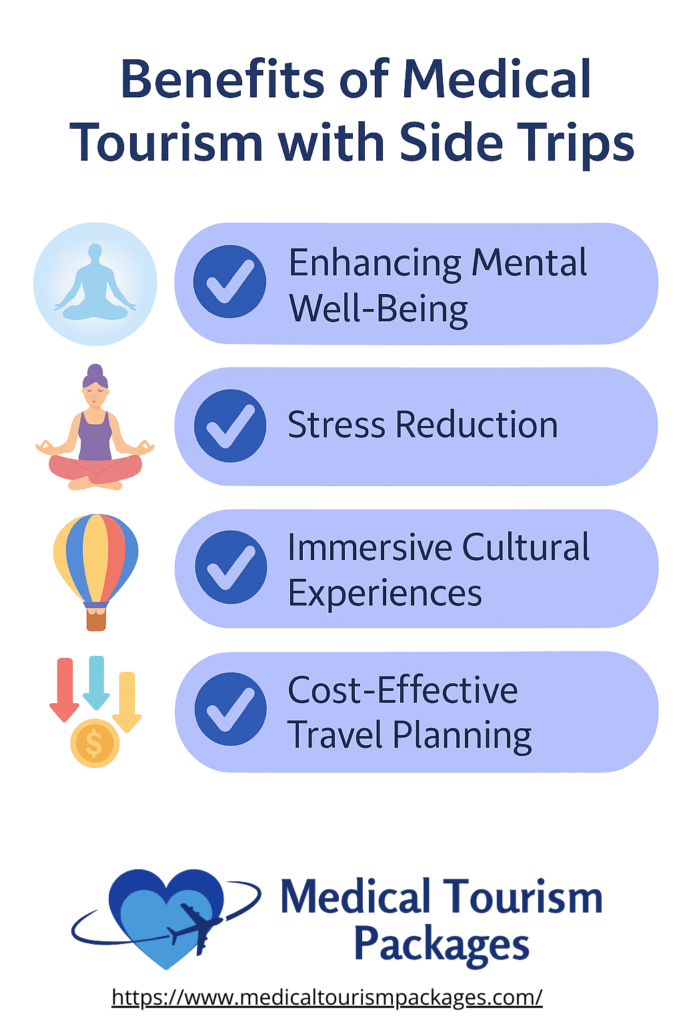
Recovery-Conscious Activity Scheduling
Plan activities based on your energy levels throughout the day:
- Morning activities (8-11am): Best for LASIK patients and those with lower energy
- Mid-day rest periods (12-2pm): Essential for cardiovascular and orthopedic recovery
- Later afternoon experiences (3-5pm): Good for activities requiring more energy
- Early evening options (6-8pm): Suitable for seated performances and food experiences
Listen to your body and don’t hesitate to cut activities short if you feel tired or uncomfortable.
Transportation Options
Getting around safely supports your recovery process:
- Ride-sharing services: Uber and DiDi work in major cities
- Medical concierge services: Many hospitals arrange transportation
- Specialized services: Wheelchair-accessible transportation needs 24-48 hour advance booking
- Between-city travel: Consider short flights rather than mountain roads during early recovery
Always confirm accessibility needs when booking transportation services.
Communication Support
Clear communication helps you manage your recovery needs:
- Translation apps: Download Google Translate with Spanish offline pack
- Medical cards: Carry cards explaining your limitations in Spanish
- Hospital liaison: Many medical facilities offer cultural concierge services
- Tour operators: Several agencies focus on medical tourism cultural experiences
Most tourist areas have English-speaking staff, but basic Spanish phrases improve your experience.
Frequently Asked Questions
Why is Colombia considered a popular destination for medical tourism?
Colombia is a top medical tourism destination due to its combination of affordable treatment costs, internationally accredited hospitals, highly trained medical professionals, and advanced healthcare technology. Patients can save up to 80% compared to U.S. prices while receiving care that meets global standards.
What are the most common procedures sought by medical tourists in Colombia?
Popular procedures among medical tourists include cosmetic surgeries (such as breast augmentation, rhinoplasty, and tummy tucks), dental treatments (like implants and veneers), cardiovascular interventions, orthopedic surgeries, LASIK, and fertility treatments.
Which Colombian cities are best for medical tourists?
Top cities for medical tourism include Bogotá for cardiovascular care, Medellín for cosmetic and transplant procedures, Cali for aesthetic surgery, and Cartagena for developing infrastructure. Each city offers unique strengths and internationally accredited facilities.
How long do medical tourists usually stay in Colombia?
The length of stay depends on the procedure. Cosmetic surgeries may require 10 to 30 days, while dental implants and major surgeries like heart bypass may need extended stays or return visits. Patients often arrive 2–3 days before surgery and stay 10–15 days post-op for recovery and follow-ups.
What visa rules apply for medical tourists visiting Colombia?
Citizens from many countries, including the U.S., can enter Colombia without a visa for up to 90 days. This stay can often be extended for another 90 days through Colombian immigration, allowing medical tourists ample time for treatment and recovery.
Is it safe to undergo surgery in Colombia as a foreign patient?
Yes, provided that patients choose accredited hospitals and experienced professionals. Facilities with Joint Commission International (JCI) accreditation follow rigorous safety and quality standards. Many doctors in Colombia have international training and speak English fluently.
What recovery challenges do medical tourists face after surgery in Colombia?
Common challenges include mobility issues, fatigue, and managing pain or swelling. Some procedures require assistive devices or longer physical therapy. Medical tourists should follow post-op instructions closely and may benefit from staying in recovery-friendly accommodations.
Are there transportation services for patients with limited mobility in Colombia?
Yes, services like Green Travel DMC in Bogotá, Medellin Tours, Wheel the World, and QRST Wheelchair Transportation provide accessible transport with adapted vehicles and trained drivers for patients with mobility challenges.
